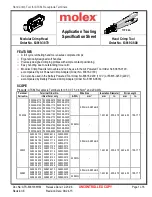
FAA
APPROVED
Page 12 of 19
AIRPLANE FLIGHT MANUAL - MODEL 8KCAB
Revision:
H
Issued:
2.1.3 Inverted Fuel and Oil Systems
The inverted fuel system consists of a 1.5 gal. header tank in the forward cabin
with a standpipe to draw fuel from the center of the tank. One-half (0.75 gals.) of
the tank capacity is useable in inverted flight. The system is completely
automatic; however, sufficient time (see Section 1.2.6) must be allowed between
periods of continuous inverted flight to allow the header tank to refill.
The inverted oil system consist of an inverted/upright shuttle valve, an oil/air
separator canister and a system of interconnecting lines. This system is
completely automatic (see also Section 2.1.7).
Oil pressure may be interrupted momentarily in certain aircraft attitudes or during
certain combinations of maneuvers. These interruptions are normal but should
not be allowed to extend beyond 15 seconds (avoid extended right knife edge
flight).
2.1.4 Rotating Beacons and Strobe Lights
Particularly at night, reflections from clouds, haze or dust can produce optical
illusion and intense Vertigo. Under these conditions, rotating beacons and strobe
lights should be turned off prior to entering.
2.1.5 Fuel
System
The total useable fuel capacity is 40 gallons, of which approximately 20 gallons is
carried in each wing tank. The wing tanks are interconnected both in the vent
system and the fuel feed system, and may be considered as one tank. Fuel feeds
simultaneously from both tanks and the total fuel quantity in each tank is shown
by a right and left tank gauge. The gauges are marked in fractions of the total fuel
(E, ¼, ½, ¾, F) and reads “E” (Empty) with unusable fuel in the tanks. Fuel tank
caps are not vented and must seal completely to prevent a difference in fuel level
between the two tanks.
2.1.6 Alternate
Air
Avoid using alternate air on the ground. With alternate air on, induction air is not
filtered and abrasive dirt particles may enter the engine. In flight, use alternate air
only when icing is suspected, i.e. since heat cause partial loss of power, do not
use when landing unless atmospheric conditions indicate that icing is probable,
because full power may be needed on a go-around.
2.1.7 Cold Weather Operation
Summary of Contents for 8KCAB 2003
Page 1: ......
Page 2: ......
Page 3: ......
Page 21: ......
Page 22: ......
Page 23: ......
Page 24: ......
Page 25: ......
Page 26: ......
Page 27: ......
Page 28: ......
Page 29: ......
Page 30: ......
Page 31: ......
Page 32: ......
Page 33: ......
Page 34: ......
Page 35: ......
Page 36: ......
Page 37: ......
Page 38: ......
Page 39: ......
Page 40: ......
Page 41: ......
Page 42: ......
Page 43: ......
Page 44: ......
Page 45: ......
Page 46: ......
Page 47: ......














































